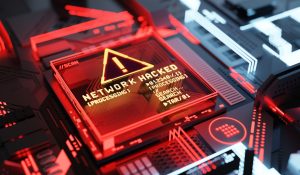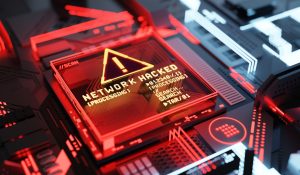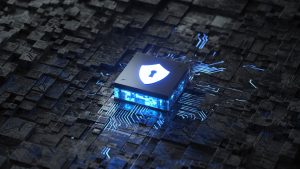
There are only two different types of companies in the world: those that have been breached and know it and those that have been breached and don’t know it. Author: Ted Schlein.
Cybercrime in the Age of Digital Transformation
When most people think of cybercrime, they think of the theft of personal information, including banking account numbers or credit card information. This is the most common type of cybercrime, but there are many more. Also, criminals are creative and continue to find new ways to use the Internet and our computer systems for their gain. Here are some of the types of cybercrime that companies and individuals experience.
- Email fraud.
- Identity theft and fraud, which is stealing someone’s identity.
- Theft and sale of personal data stored on corporate computers.
- Cyberextortion, or demanding money in exchange for preventing an attack.
- Ransomware, which is a type of cyber extortion that uses software to carry out the crime.
- Cryptojacking or mining cryptocurrency using resources that the person does not own.
- Cyberespionage, which is accessing government or company data and selling it to a competitor or rival.
These are only a few of the ways criminals use computers to carry out their deeds.
Types of Risks
In a 2019 survey, Digital Transformation was the number one concern for 54% of the companies, and cybersecurity was a top priority for another 49% of the respondents. Understanding the types of risks and where they originate is the first step to keeping your business safe from cybercrime. When it comes to hardware, desktops and laptops are the most vulnerable. Next are smartphones, then tablets, wireless access points, servers and server rooms, and lastly, routers and switches. Email is the most common form of transmission of malware and viruses and accounts for over 92% of the attacks.
Data is the pollution problem of the information age, and protecting privacy is the environmental challenge. Author: Bruce Schneier.
Current Threats and Most Common Issues
Several cybercrime issues strike terror in business managers’ hearts, one of them is data breaches.
In January of 2019, 1.76 billion records were leaked to criminals around the world. In 2020, 2,953 breaches were reported around the world. This is a growing threat, and it seems like as soon as new security protocols are invented, criminals find a novel way to get around them.
This type of cybercrime can significantly impact the business both in the short and long-term time frame. They can be impacted by significant financial losses, which average about £101,225 per incident in the short term.
A data breach does something else. It destroys trust in the company and compromises their customers’ willingness to trust them with their personal information in the future. It is one of the worst public relations nightmares a company can face, and that is why it is essential to keep up with current trends and technology in cybersecurity.
Emails and Malware
About 92% of all malware attacks involve email as a carrier to spread the virus. Over 9.2 million computer users around the world reported receiving a suspicious email in 2019. The worst news for companies is that 29% of them opened the emails. Nearly 5% of all data breaches were caused by business emails containing malware that unsuspecting employees opened.
This makes it especially important to have a solid company policy about emails and attachments, but enforcing them can be difficult. This is only one side of the equation. Many organisations use software like Microsoft Intune, which allows you to configure device settings on your workers’ personal devices to meet system compliance needs.
Now, AI-powered apps are available that help to improve threat detection, reporting, and immediate response for remote working teams. Some of these applications include Intruder, Switcherry, Syxsense, and others that can add an extra layer of protection to your remote-working software.
Special Challenges of Remote Working
The onset of the pandemic left many companies around the world scrambling to find a way to stay in business when their companies were forced to close due to lockdown. One of the most challenging aspects of developing teams of remote workers, with little time for planning, was keeping company systems safe. Companies with remote workers face special challenges when it comes to cybercrime and security.
If you think technology can solve your security problems, then you don’t understand the problems and you don’t understand the technology. Author: Bruce Schneier.
Many times, users will use their personal devices to log onto the companies system. Unfortunately, these systems may or may not have the most robust security installed. It is difficult to prevent employees from engaging in activities that could place their system and the company system at risk. Some companies solved the issue by only allowing company-issued computers and devices to access the company system, but this proved expensive, and some companies could not do this.
What can you do?
Data breaches are on the rise around the globe, which makes money spent on cybersecurity worth it. The most important thing you can do is make sure your firewall is up-to-date with current cybersecurity standards. Talk to your security team to see if you need to include an upgrade in your strategic planning.
Data backup is another important factor in keeping your business running smoothly. Most companies already perform daily and weekly backups. One of the challenges of today’s environment is that not all data is generated from the central office. Data backups when workers are in different locations creates a unique challenge.
As cyber security leaders, we have to create our message of influence because security is a culture and you need the business to take place and be part of that security culture. Author: Britney Hommertzheim.
Using a cloud-based backup service is one way to alleviate this challenge. There are many hybrid solutions available that integrate your regular backups with cloud-based data from your team. One of the biggest threats is that one of your remote workers could be the victim of a ransomware attack that infects your network or local backups. Having a data backup using cloud-based strategies could allow you to recover your data quickly.
Spending on cybersecurity is expected to grow by about 12 to 15% from 2020 through the end of 2021. If you are a business manager, it is time to conduct an audit and make sure that your business is ready for digital transformation, with cyberattack attempts now occurring every 11 seconds, which means that this is a topic that should be on your next meeting agenda.
Editor’s Note: This article is published with permission of the author © 2021 Imran Zaman. All rights reserved.




